Today I grabbed my trusty old camera and went for a walk along the Rhine. It was supposed to be just an ordinary stroll, but with a river like this, “ordinary” simply doesn’t fit. In the place where I stopped, the Rhine is over one kilometre wide. When you stand before such a force of nature, you really feel its calm yet immense power — this is one of those rivers that genuinely shaped the history, economy and even culture of Western Europe.
Right in the middle of the river lies Graswerth Island. A small, narrow strip of land, but of great importance — since 1978 it has been protected as part of a nature reserve. No buildings, no people, no infrastructure. Just silence, thick vegetation, old trees, and perfect habitats for waterbirds. It’s an important stopover for migrating species and a nesting site for some of them. The birds eye people suspiciously at first, but if you stay still long enough, they eventually accept you as part of the scenery.
The first one to appear was the mute swan. Majestic, proud — a true aristocrat. In photos, it simply looks pretty, but in real life it’s genuinely impressive. And despite its name, it’s not mute at all. It hisses, snorts, and grunts, especially when someone invades its space. And yes — it can attack.
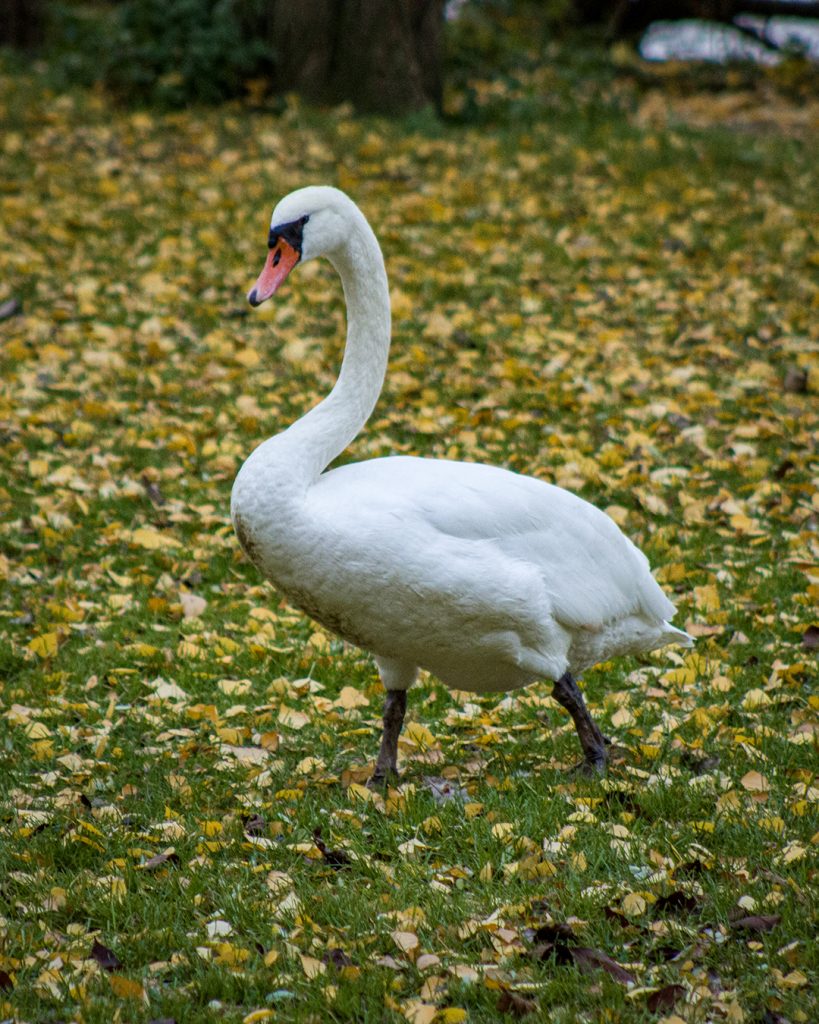
And whenever we talk about swans, we need to remember: feeding waterbirds with bread, no matter the species, leads to wing deformities. The bird then loses its ability to fly. A bit of human ignorance can do more harm than winter frost.
Nearby wandered the Egyptian goose. From a distance, it looks like an exotic goose, one of the most distinctive birds that arrived in Europe in recent decades. It’s a non-native species that spreads quickly. Very territorial, gladly taking over cavities, nests and feeding spots, pushing out native species. On the other hand — it’s undeniably beautiful. A perfect example of nature’s little paradoxes.

Even though it looks and behaves like a goose — it’s actually a duck.
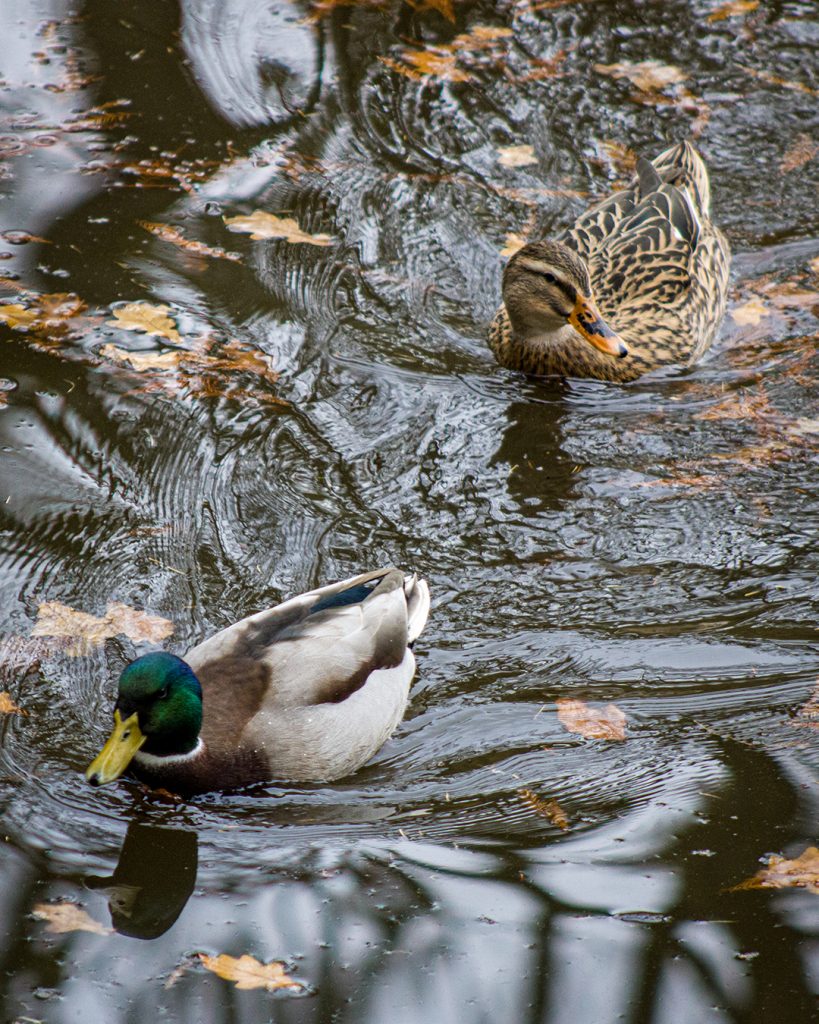
Next came the mallard, known to absolutely everyone who has ever visited a pond. The most common duck, yet far from boring. Nearly all domestic duck breeds kept by humans for 2,500 years descend from the mallard. The drakes are tiny works of art — green heads, crisp white bands, smoky wing feathers. The females are more subtle, perfectly blending in with reeds and riverbanks.
Then, with surprising elegance, appeared the moorhen — also called the water hen. And indeed, there is something chicken-like about it. What’s striking is that it has no webbed feet, yet swims and moves through water with ease. Females are dominant; they chase off rivals and often force the males to sit on eggs. A tiny avian soap opera.
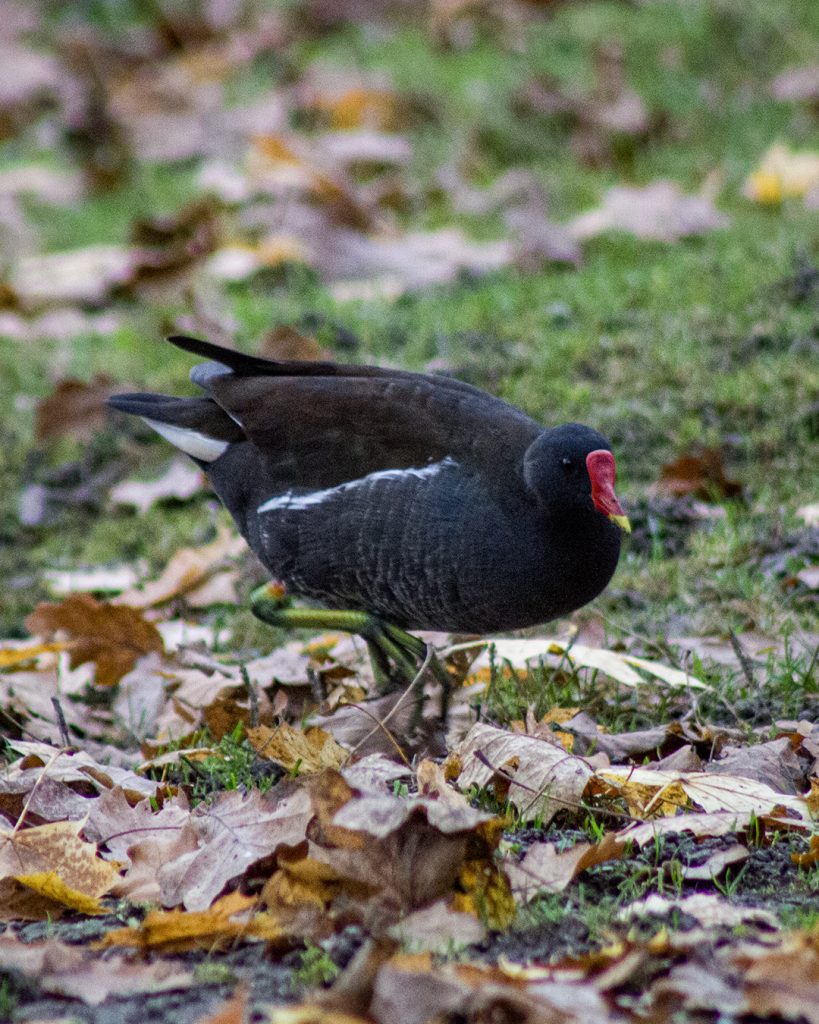
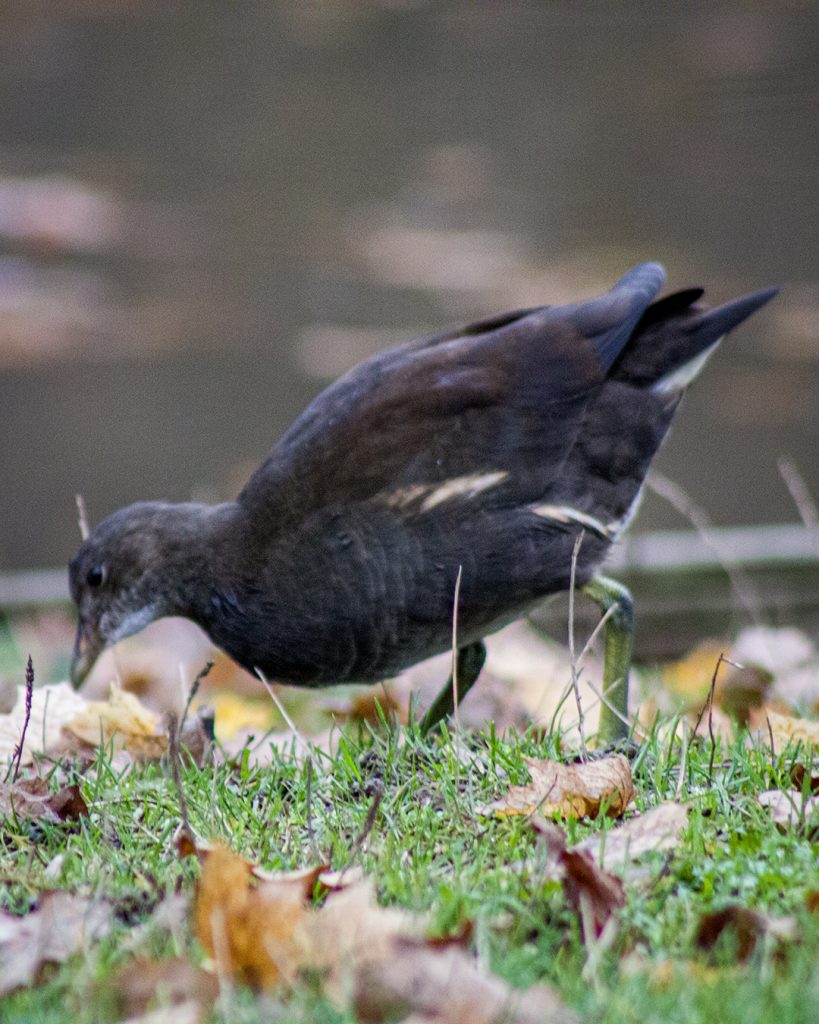
Its Latin name, Gallinula chloropus, literally means a little hen with green feet. And those greenish legs really are its trademark.
A bit further, I spotted a mandarin duck — one of the most beautiful ducks in the world. The males look like they were painted by a Japanese artist — orange sails, bright feathers, patterns, contrasts. In East Asian culture, they symbolize love and fidelity. Traditionally, they are given to newlyweds as a wish for a long and successful marriage.
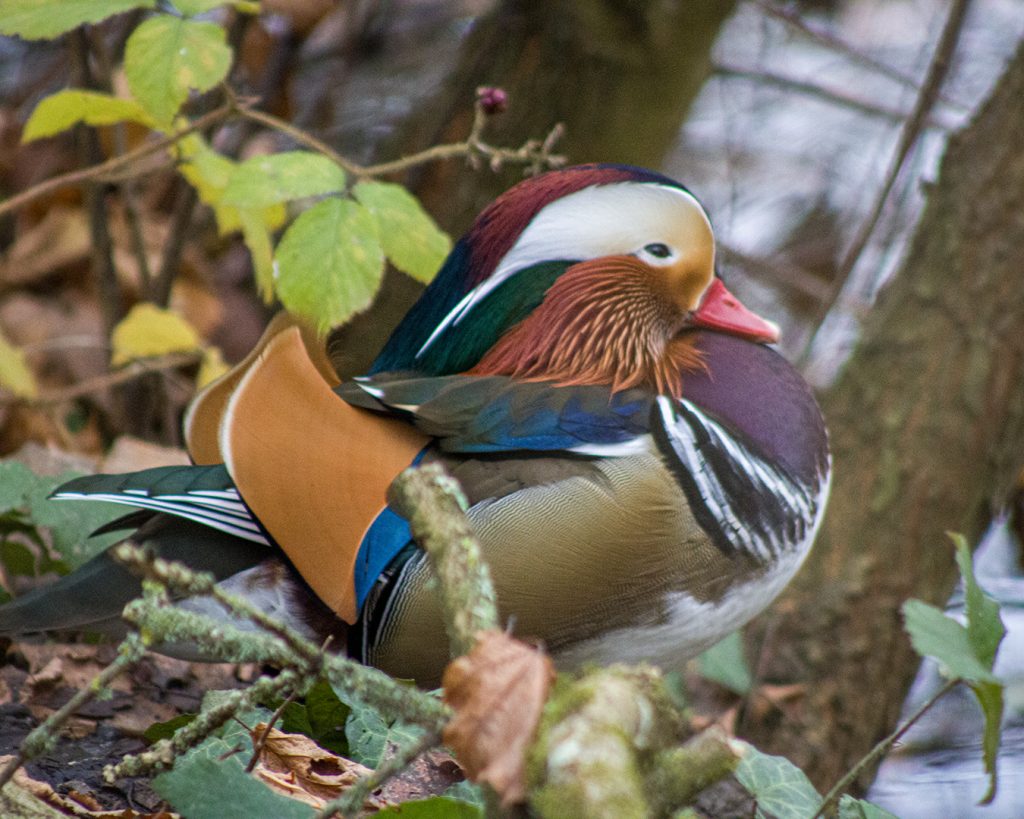
Most mandarin ducks in Europe are escapees from private collections and parks, and they adapted brilliantly to our climate.
Another large bird that appeared along the water was the Canada goose — one of the biggest goose species in the world. Brought to Europe as an ornament for royal gardens, it soon began escaping and forming wild populations. Beautiful, dignified — but invasive. It competes with native species, highly territorial, and adapts to almost any environment. A bird capable of causing quite a commotion.

On the western side of Graswerth Island I also saw cormorants — perching on branches, drying their wings as they typically do. On the stones sticking out of the water there were also some gulls, but they were too far away for a proper photo. Maybe next time.
During my walk, I saw a few people feeding birds with bread. Sadly, it’s still a common habit, but a very harmful one. Never feed bread!
The best choices are grains, corn, oats, wheat and finely chopped vegetables. We never feed in summer — only in late autumn and winter, when natural food sources decrease. Consistency is important — birds quickly treat us as a constant food source. These small choices make a huge difference for their health.
Today’s walk along the Rhine turned out to be a true nature feast. It’s amazing how many species you can see in just one spot. A walk like this makes you want to go out even more often!
